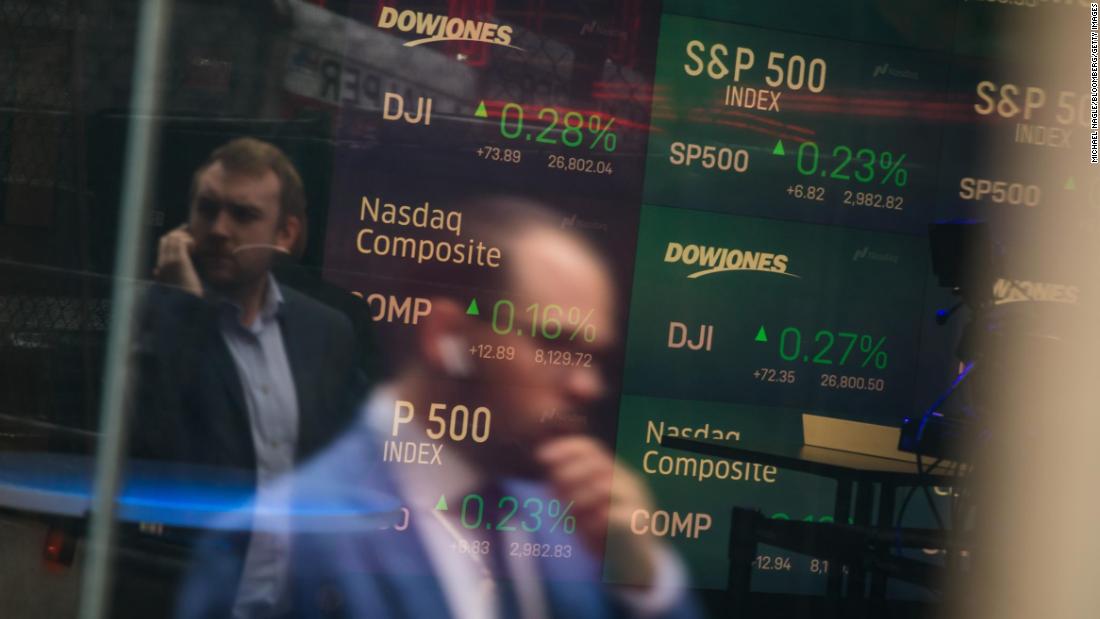[ad_1]
“The Federal Reserve should get our interest rates down to ZERO, or less,” the president tweeted.
Desperate to boost growth, central bankers in Europe and Japan in recent years dropped interest rates into negative territory for the first time in modern history.
There is a growing chorus warning that the Bank of Japan and European Central Bank’s subzero regimes have backfired. Critics and some new academic research argue these unorthodox policies are crushing banks, keeping a lid on inflation and failing to juice growth.
“Negative interest rates have failed in Europe and Japan,” Richard Fisher, former president of the Dallas Federal Reserve Bank, told CNN Business in an email. “They are anathema for savers and our community and regional banks that bank the average American.”
How negative rates could backfire
Trump’s suggestion of negative rates flies in the face of the economic optimism expressed by the White House.
If the economy is so strong, why would the Fed need to resort to policies it didn’t even pursue during the Great Recession? The Fed dropped rates to near-zero in 2008 after the implosion of Lehman Brothers, but never ventured into subzero territory.
Danielle DiMartino Booth, a vocal critic of modern central bank policy, cautions that negative rates would bring the debt-reliant US economy “to its knees.”
“Negative interest rates are about as un-American as you can possibly be,” said DiMartino Booth, CEO and chief strategist for Quill Intelligence. “We are a nation that, for better or worse, needs credit creation to grease the wheels of the economy. Without that, growth would truly come to a standstill.”
Of course, no one can say for certain exactly how negative rates in the United States would play out. And the Fed has not suggested it will need to resort to such tactics anytime soon.
Financing $1 trillion deficits
But now Trump is voicing support for zero or negative rates as a way to “refinance” America’s mountain of debt, which has only grown larger due to tax cuts and a spending surge under the current administration.
“INTEREST COST COULD BE BROUGHT WAY DOWN,” Trump tweeted.
It is true that Washington is paying more to borrow than other nations, such as Germany and Japan, where rates are negative.
Exhibit A: Deutsche Bank
The problem with negative rates is they act as an outright tax on banks. And banks are the vehicles by which central bank policy is transmitted to the real economy.
Normally, banks earn interest when they park excess reserves at central banks. But under negative rates, the opposite happens. Central banks charge lenders interest for sitting on that cash. The aim is to encourage lending — but in practice it has squeezed lending profitability, which is also known as net interest income.
Supporters of negative rates argue that the environment would be tougher if central bankers hadn’t introduced these extreme policies.
Unintended consequences
However, it’s impossible to prove a counterfactual. And new academic research details the unintended consequences of negative rates.
“Our study shows negative interest rate policy has backfired,” Ru Xie, an associate professor of finance at the University of Bath in the United Kingdom, said in a statement last month.
The paper found that the “adverse impact” of negative rates has been stronger for smaller banks. Trump has previously promised to boost America’s community banks by speeding up the economy and cutting regulation.
Even research from the Federal Reserve has found negative rates have failed to boost inflation.
“The reaction stresses the uncertainty surrounding the effectiveness of negative policy rates as expansionary tools when inflation expectations are anchored at low levels,” the Fed paper said.
Bringing negative rates to the United States would harm savers and those hoping to earn safe returns in fixed income. Instead of earning very little interest, they would get penalized.
“The 10,000 baby boomers turning 65 everyday who want to retire would certainly be disgusted with that,” Peter Boockvar, chief investment officer at Bleakly Advisory Group, wrote in a note to clients on Wednesday.
All of this suggests the Fed would face a backlash if it tried to move rates below zero. The banking industry, retirees and even mainstream economists would cry foul. And they would point to the failed experiments in Europe and Japan.
[ad_2]
Source link



